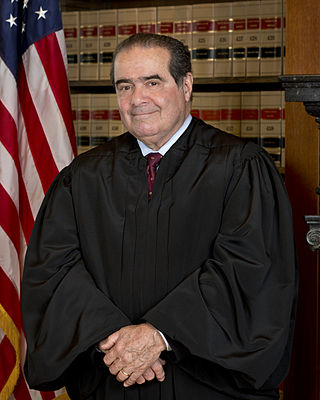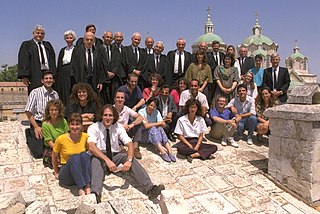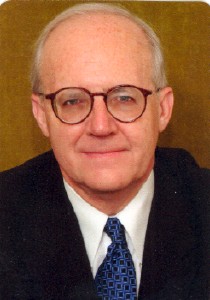
The Supreme Court of the United States (SCOTUS) is the highest court in the federal judiciary of the United States. It has ultimate appellate jurisdiction over all U.S. federal court cases, and over state court cases that turn on questions of U.S. constitutional or federal law. It also has original jurisdiction over a narrow range of cases, specifically "all Cases affecting Ambassadors, other public Ministers and Consuls, and those in which a State shall be Party." The court holds the power of judicial review, the ability to invalidate a statute for violating a provision of the Constitution. It is also able to strike down presidential directives for violating either the Constitution or statutory law.

Antonin Gregory Scalia was an American jurist who served as an associate justice of the Supreme Court of the United States from 1986 until his death in 2016. He was described as the intellectual anchor for the originalist and textualist position in the U.S. Supreme Court's conservative wing. For catalyzing an originalist and textualist movement in American law, he has been described as one of the most influential jurists of the twentieth century, and one of the most important justices in the history of the Supreme Court. Scalia was posthumously awarded the Presidential Medal of Freedom in 2018, and the Antonin Scalia Law School at George Mason University was named in his honor.

Alex Kozinski is a Romanian-American jurist and lawyer who was a judge on the U.S. Court of Appeals for the Ninth Circuit from 1985 to 2017. He was a prominent and influential judge, and many of his law clerks went on to clerk for U.S. Supreme Court justices.

Harry Andrew Blackmun was an American lawyer and jurist who served as an associate justice of the Supreme Court of the United States from 1970 to 1994. Appointed by President Richard Nixon, Blackmun ultimately became one of the most liberal justices on the Court. He is best known as the author of the Court's opinion in Roe v. Wade.

A law clerk, judicial clerk, or judicial assistant is a person, often a lawyer, who provides direct counsel and assistance to a lawyer or judge by researching issues and drafting legal opinions for cases before the court. Judicial clerks often play significant roles in the formation of case law through their influence upon judges' decisions. Judicial clerks should not be confused with legal clerks, court clerks, or courtroom deputies who only provide secretarial and administrative support to attorneys and/or judges.

John Michael Luttig is an American lawyer and jurist who served as a U.S. circuit judge on the United States Court of Appeals for the Fourth Circuit from 1991 to 2006. Luttig resigned his judgeship in 2006 to become the general counsel of Boeing, a position he held until 2019.

Danny Julian Boggs is an American attorney and a senior United States circuit judge of the United States Court of Appeals for the Sixth Circuit. He was appointed to the court in 1986 and served as its chief judge from September 2003 to August 2009. Boggs was on the short list of President George W. Bush's candidates for the U.S. Supreme Court.
Judicial disqualification, also referred to as recusal, is the act of abstaining from participation in an official action such as a legal proceeding due to a conflict of interest of the presiding court official or administrative officer. Applicable statutes or canons of ethics may provide standards for recusal in a given proceeding or matter. Providing that the judge or presiding officer must be free from disabling conflicts of interest makes the fairness of the proceedings less likely to be questioned.

The lists of law clerks of the Supreme Court of the United States cover the law clerks who have assisted the justices of the Supreme Court of the United States in various capacities since the first one was hired by Justice Horace Gray in 1882. The list is divided into separate lists for each position in the Supreme Court.

Jeffrey Stuart Sutton is an American lawyer and jurist serving as the Chief United States circuit judge of the United States Court of Appeals for the Sixth Circuit.
Janice Marie Holder is an American judge who served as a circuit court judge for Tennessee's Division II Circuit Court in the 30th district, served as the third woman justice on the Tennessee Supreme Court from 1996 until 2014, and was the first female Chief Justice of Tennessee on the Tennessee Supreme Court from 2008 until her retirement in 2014.

Brett Michael Kavanaugh is an American lawyer and jurist serving as an associate justice of the Supreme Court of the United States. He was nominated by President Donald Trump on July 9, 2018, and has served since October 6, 2018. He was previously a U.S. circuit judge of the U.S. Court of Appeals for the District of Columbia Circuit from 2006 to 2018.

Patrick Joseph Schiltz is an American lawyer who serves as the chief United States district judge of the United States District Court for the District of Minnesota.

Allison Blair Jones Rushing is an American attorney and jurist serving as a United States circuit judge of the United States Court of Appeals for the Fourth Circuit since March 2019.

Daniel Aaron Bress is an American lawyer and jurist who serves as a United States circuit judge of the United States Court of Appeals for the Ninth Circuit.












